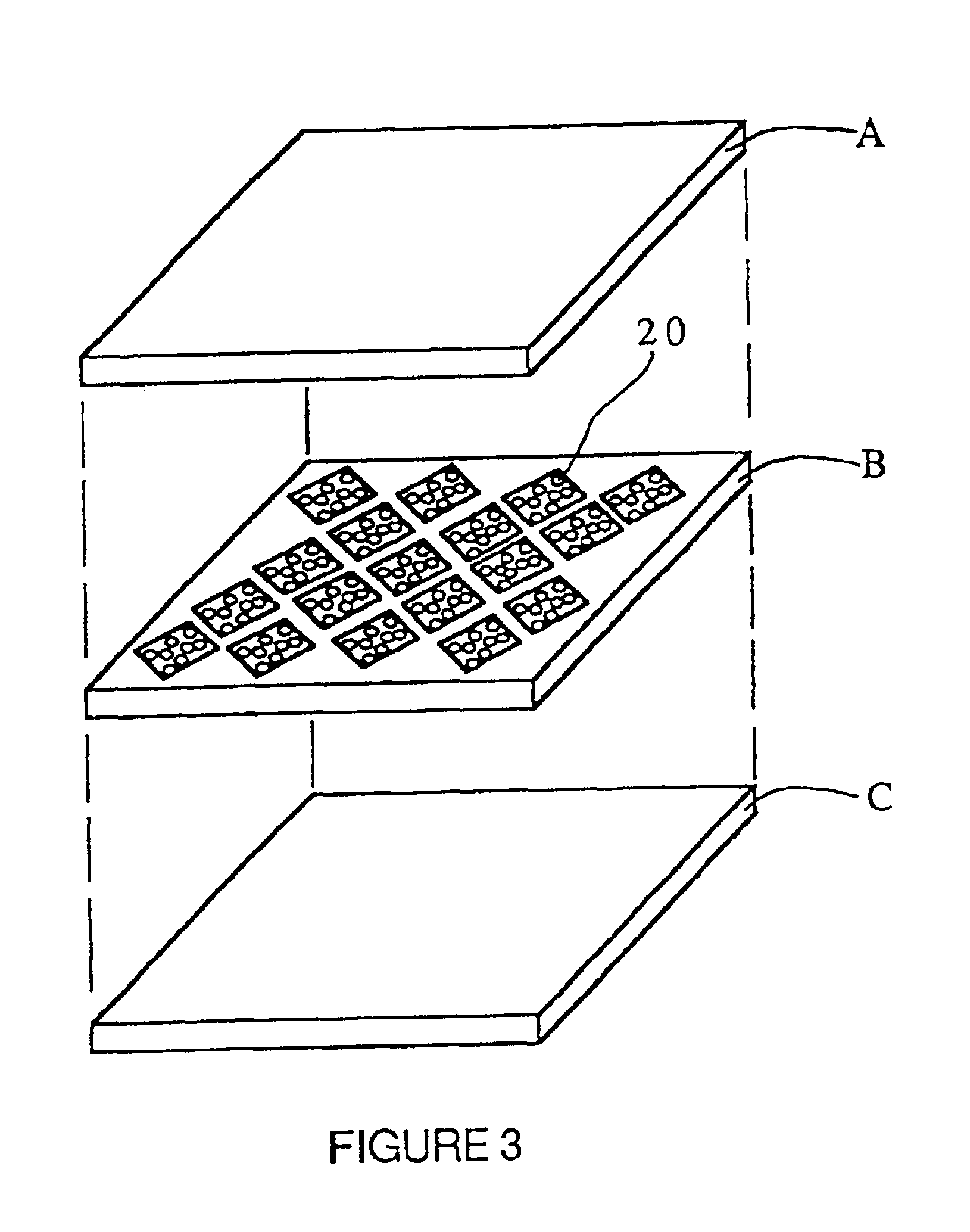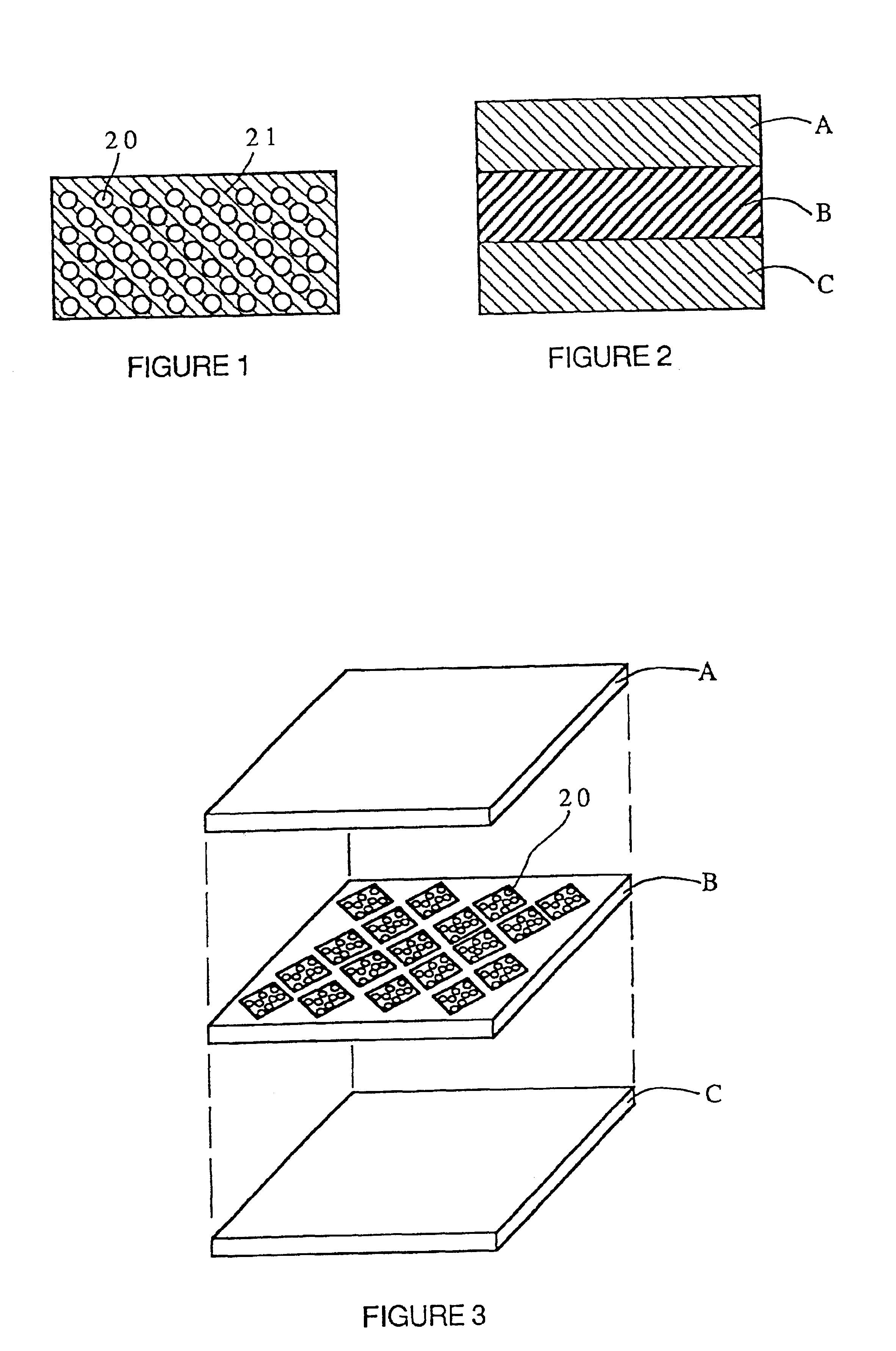Phase change material thermal capacitor clothing
a phase change material and thermal capacitor technology, applied in heat storage plants, exothermal chemical reactions for heating, natural cellulose pulp/paper, etc., can solve the problem of not providing a flexible composite material with thermal storage properties
- Summary
- Abstract
- Description
- Claims
- Application Information
AI Technical Summary
Benefits of technology
Problems solved by technology
Method used
Image
Examples
example 1
Thermal Capacitor Diving Suit
The following example of a phase change material thermal capacitor diving suit has been chosen to illustrate the benefits of the present invention. The use of a phase change material thermal capacitor diving suit offers a unique approach to both buffer the individual from extreme environments and simultaneously provide the cooling required to absorb heat generated in the body at a rate that maintains thermal comfort and / or prevents hypothermia or hyperthermia. The same thermal design method is applicable to the other embodiments of the invention described elsewhere in the specification.
A simplification of the steady-state heat transfer process in a prior art diving suit is shown in FIG. 16. Many analytical and experimental algorithms exist, along with computer programs thereof, for determining the allowable rate or quantity of net heat loss from or input to the body to maintain thermal comfort and protection from hypothermia and hyperthermia. The former ...
example 2
Thermal Capacitor Ski or Sport Boot
A simplification of the heat transfer process in a prior art ski boot is shown in FIG. 16. The term, Qequil, refers to the amount of heat generated from the foot such that, if removed, no uncomfortable or medically unsafe net heat storage or loss in the foot results. Hence, thermal comfort is maintained. The term, Qloss, refers to the amount of heat lost from the foot, through the boot and to the external environment. When Qequil, or the amount of heat desirable to remove, is less than Qloss, chilling of the foot occurs and vice versa.
For example purposes only, suppose that the following conditions are true:
Tskin=83.5 FTe1=15 FTe2=5 Fx1={fraction (3 / 16)}″x2=1″k1=0.035 B / hr-ft-Fk2=0.05 B / hr-ft-Fh=30 B / hr-ft2-FAf=0.67 ft2 Cpf=0.83 B / lbm-FQequil=19.9 B / hr
From these givens, one can compute Qloss according to equation [5], below, to be equal to 21.4 B / hr in a 15 F environment and 24.5 B / hr in a SF environment. If one assumes no distribution of heat via ...
PUM
| Property | Measurement | Unit |
|---|---|---|
| Temperature | aaaaa | aaaaa |
| Temperature | aaaaa | aaaaa |
| Temperature | aaaaa | aaaaa |
Abstract
Description
Claims
Application Information
 Login to View More
Login to View More - R&D
- Intellectual Property
- Life Sciences
- Materials
- Tech Scout
- Unparalleled Data Quality
- Higher Quality Content
- 60% Fewer Hallucinations
Browse by: Latest US Patents, China's latest patents, Technical Efficacy Thesaurus, Application Domain, Technology Topic, Popular Technical Reports.
© 2025 PatSnap. All rights reserved.Legal|Privacy policy|Modern Slavery Act Transparency Statement|Sitemap|About US| Contact US: help@patsnap.com



